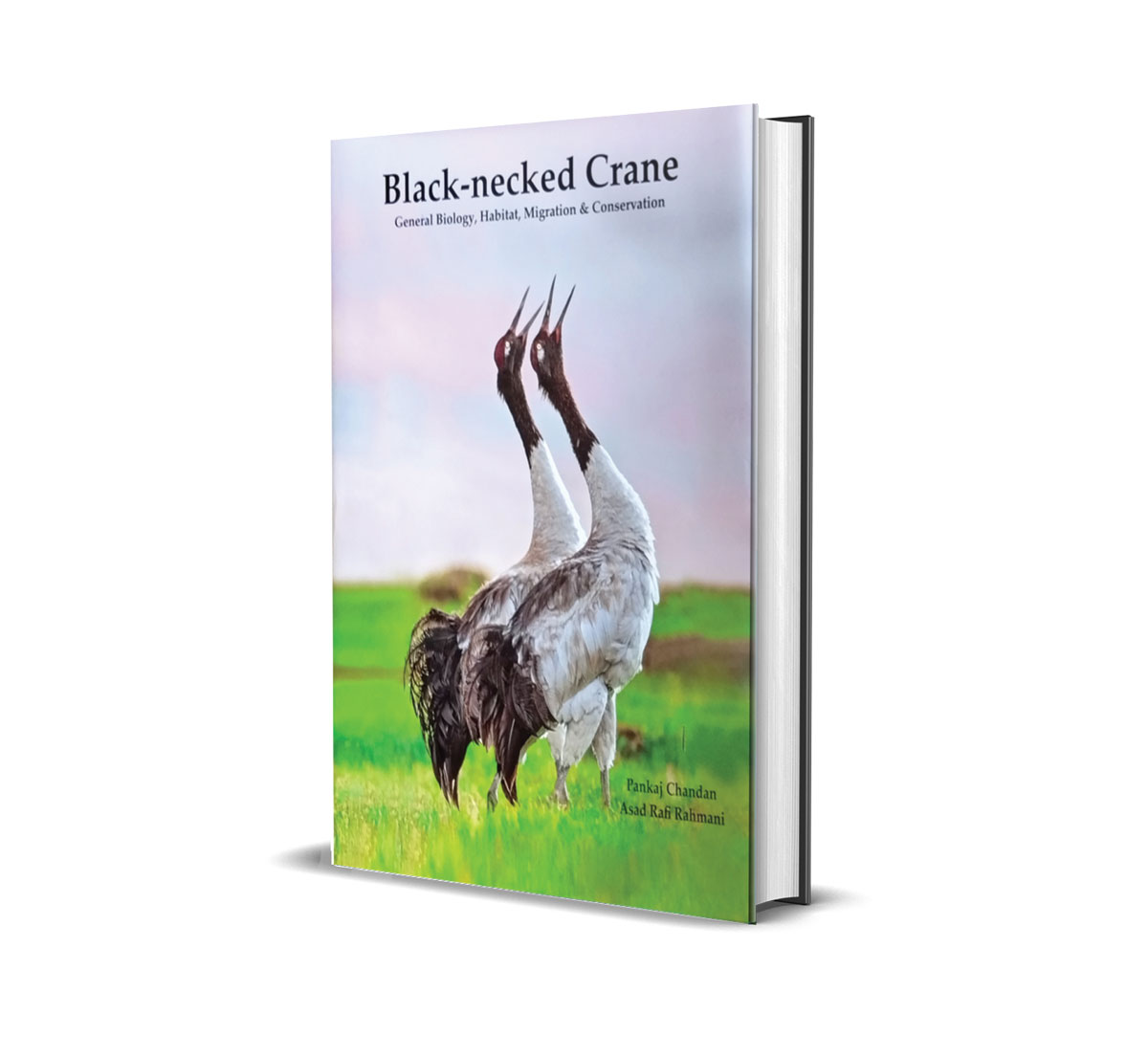Book Review: Black-necked Crane: General Biology, Habitat, Migration & Conservation
First published in Sanctuary Asia,
Vol. 43
No. 10,
October 2023
With improved technology and a much greater appetite among the young for books to remind them of the wonderful biosphere in which they live, it is heartening to see how many new, high-quality publications are emerging from within India. Here are books that Sanctuary believes should be in every public library and in the homes of all those whose hearts beat to nature’s drum.
Black-necked Crane: General Biology, Habitat, Migration & Conservation
By Pankaj Chandan and Asad Rafi Rahmani
Photo editor: Dhritiman Mukherjee
Published by WWF-India, 2023
Hardcover, 198 pages, ₹1,695

Though the Internet is a ready repository of material from all over the world, books such as Dr. Chandan and Dr. Rahmani’s 200-page coffee table monograph on the Black-necked Crane play an indispensable role in presenting a consolidation of species information, that too in easy-to-understand language accompanied by apt photographs.
The book is conveniently and lucidly structured into chapters such as breeding biology, wintering ecology, food, migration, threats, conservation and management, and more. The authors dive deep into the life history of the Black-necked Crane (BNC) Grus nigricollis, the last crane species to be discovered on account of its preferred high altitude wetland habitat. The authors elaborate on the bird’s movements, eating habits, behaviour including parenting and other biodiversity in its habitat, based on the authors’ own long-term data as well as relevant research. The authors’ documentation is minute, which is indispensable in any management strategies to protect the bird.
The book traverses across countries that are part of the crane’s range. Nature truly should be without borders, so understanding the bird and the politics that affect it across its habitats is vital. In this context, the authors note that the BNC can be an excellent symbol of conservation and cooperation among nations that will help protect wetlands, grasslands, and the flyways used by them during their migration. Cranes are intricately connected to many cultures and considered sacred in many. They are a symbol of the everlasting bond between nature and people.
Each page is lit up by lovely images of birds, breathtaking landscapes, and other wildlife and communities that share their habitat. The descriptions are also aptly represented in maps, tables and graphs, making it a perfect coffee table book. Capturing wildlife in action in every aspect from breeding, feeding, even migrating over vast mountain ranges, to threats such as free-ranging dogs feeding on eggs as the bird watches, is a true feat of technology, the photographer’s presence of mind, patience, and an understanding of the BNC’s behaviour. The contributing photographers and photo editor of the book deserve a special mention for putting together a spectacular selection.
The anecdotes in little boxes throughout the book pull you into the BNC’s landscape, as though you were standing right there. The book will be useful for researchers, naturalists, students, officials in the government, and even the layman visiting the BNC’s terrain. For anyone considering conservation (or developmental) projects in this landscape, this book is a valuable tool since it identifies different aspects of the ecosystem in relation to the BNC.
I hope, when I visit Ladakh, I can also hear the Black-necked Cranes call in unison, reverberating across the valley, or better still, see these magnificent winged creatures as they raise their crimson-tipped heads to the heavens.
Reviewed by Shatakshi Gawade.


